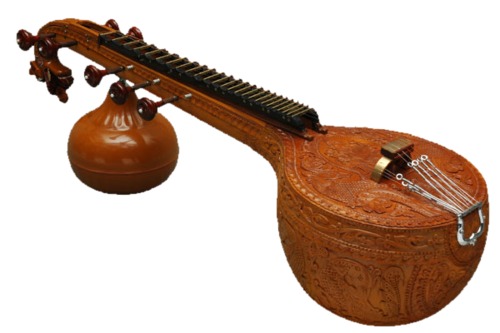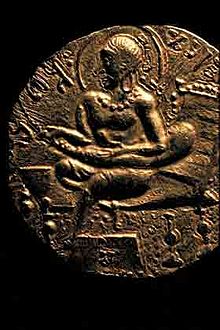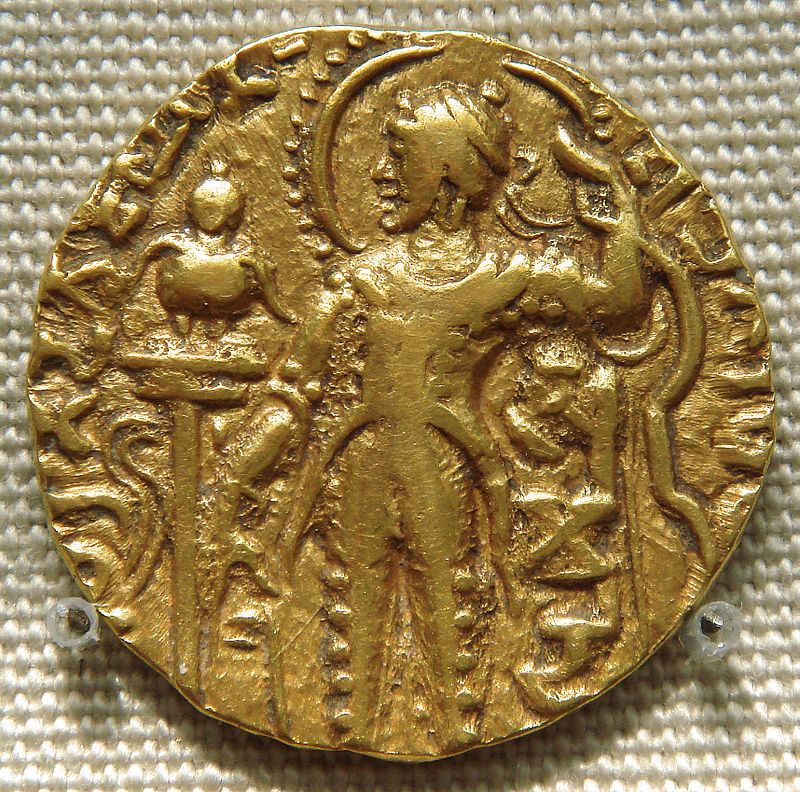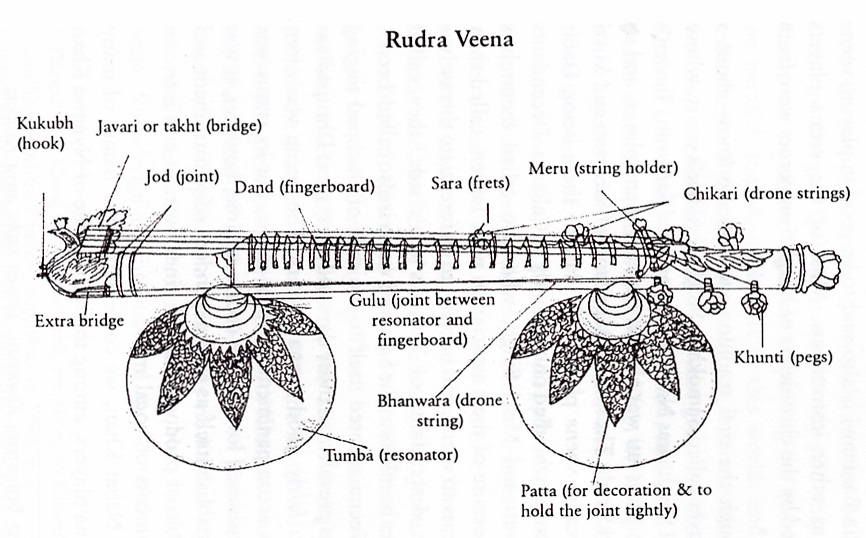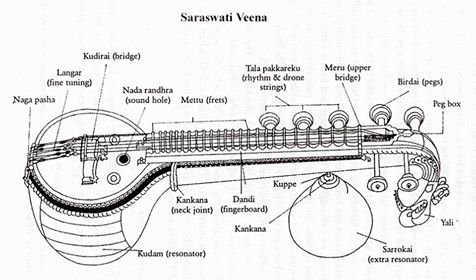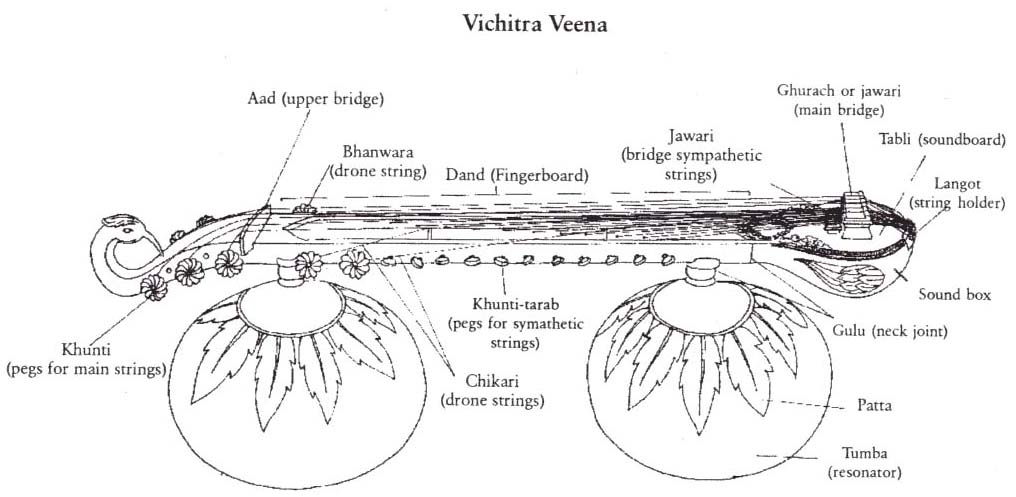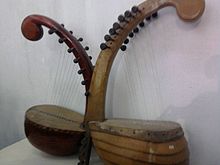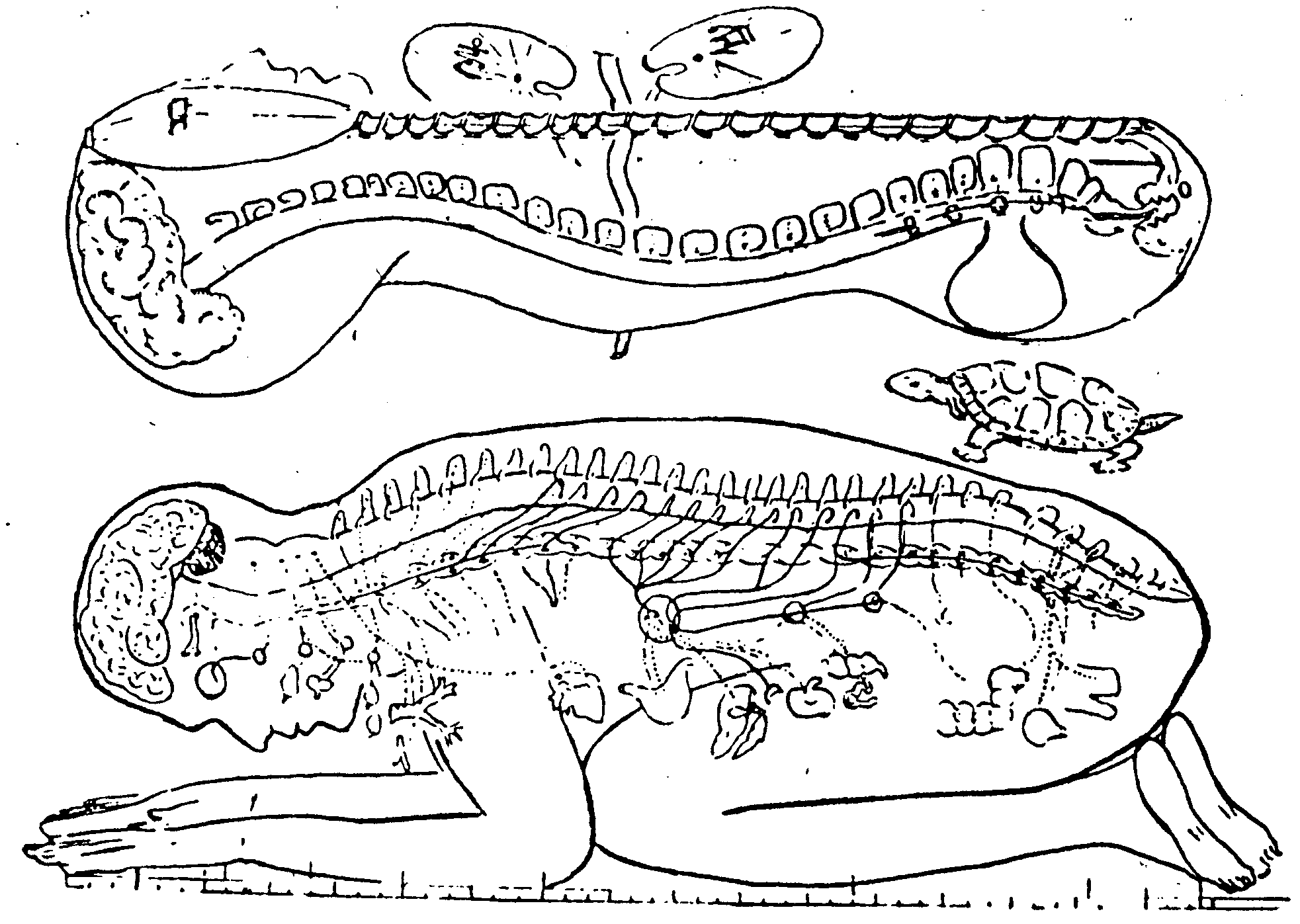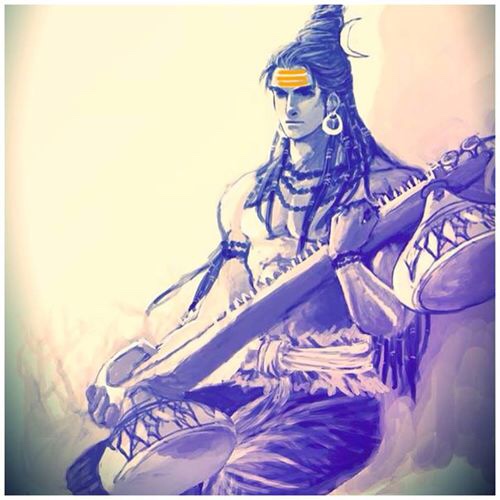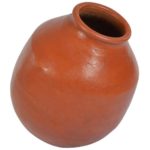Introduction
From very early times Andhras had a special aptitude for music. They did much in times of yore to develop that art (gaanakalaa) and contributed a special raga called Andhree after their own name to the series of musical notes. This fact is known from a treatise on Music named Brhaddesi written by Matanga muni. The author states in his work that in the opinion of Saardula Maatava-pancama has six raagainis of which Andhri was one. [4, 418]
To date, Andhra Cultural Portal has focused primarily on the many brilliant Andhra Composers and singers. Specific names include Annamaya, Thyagaraja, Narayana Theertha, and of course, the recently deceased Dr. Mangalampalli Balamurali Krishna (who will be sorely missed).
Nevertheless, another critical aspect of the Carnatic tradition is its instruments. Indeed, instrumentals are, today, more important than ever in reaching out to “modern/post-modern” youth who are alienated from their roots. Carnatic music may seem regimented and orthodox, but as Balamurali garu proved, it can certainly keep up with the times. Indeed, the greatness of it is that while not all who are trained in other traditions can do what Carnatic virtuosos can, even the average Carnatic performer can do what other traditions can. As such, understanding the role instrumentation plays is key.
Seven chapters (28-34) of the Natya Sastra deal with music. Bharata muni discusses both aatoodya (instrumental) and gaana (vocal) music. [2, 106] While the voice is the most personal of musical instruments, Classical Indic music hosts a panoply of percussion, strings, and woodwinds alike.
The Musical instrument (Aattodya or Vaadya) [2,110] in Carnatic music is of four kinds: Thatha vaadyam, Sushira vaadyam, Avanatta vaadyam, and Ghana vaadyam. “They are respectively called stringed instruments, thulai (hole) instruments, leather instruments and metal instruments.”[1, 97]
Thatha (stringed) instruments are generally made out of wooden pieces or chips and joined together with strings made of copper and similar materials. They are played by nail or other such devices. Instruments such as the Veena fall into this category. The Veena in particular can be played with three different techniques: tattva, anugatha, and oogha. “In tattva, the instrument is played mainly to denote the rhythm, the time-measure etc. of a particular song. In anugata, the instrument is played to follow the tempo of the song. In oogha, the instrument is played to embellish the song with no particular significance attached to it.” [2, ]
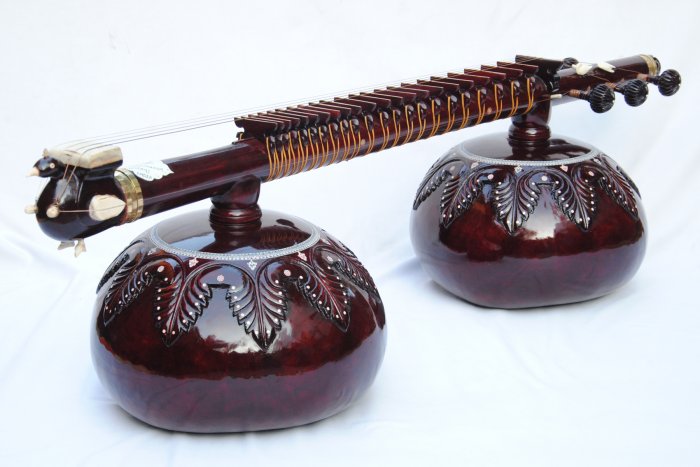
Sushira (thulai)instruments wind instruments and typically are made either out of wood or bamboo planks. They have holes, are blown from the mouth, and manipulated with the fingers. Instruments such as the flute (murali or vamsee) fall into this category. “Depending on the number of quartertones, the notes of this instrument are of three varieties—dvika or two, trike or three and catushka or four. The same are respectively known as ardhamukta or half open, kampamaana or pulsating, and vyakta mukta or fully open.”[2,110-111]
Avanatta (leather) instruments refers to percussion. “These are made out of wood and tied with leather. They can be played by the hand or small sticks.” [1, 97] These drums are usually hollow instruments with leather coverings on one or both sides.Silt and wheat/barley flour are used to fill in order to ensure consonance with the main note.
Ghana (metal) instruments are generally made out of bronze. These are commonly called cymbals and referred to as thaala (within the tradition). This is because they are used to measure time in a musical session.
The division for instruments are as follows:
Sruthi instruments: Tambura (Thatha)-Otthu (Sushira), Sruti box (Sushira)
Sangeetha Instruments: Veena (Thatha), Gottu (Thatha), Flute (Sushira), Nadaswaram (Sushira), Jalatarangam (“Water is poured in porcelain cups and then played by stick”). [1, 97]
Laya Instruments: Mridangam (Avanatta), Thavul (Avanatta), Keethu (Thatha), Moorsing (Ghana), Kanjira (Avanatta), Ghatam (Mud pot), Jalar (Gana-Bronze)” [1,97]
There are of course other instruments in use today, such as the violin and the harmonium. While their inclusion shows the versatility of Carnatic, these are not traditional, and thus, are not considered for the purposes of this collection of articles.
We begin this Series with an instrument that has long been denied its due. Indeed, Classical Indic Taste has been pushed aside for parvenus. No more. It is time to restore the traditional place of one of Indian Music’s most magnificent contributions: The Veena.
History

The Veena is verily the classical of all classical Indian instruments. It is one of three main vaadyaas first mentioned in Vedic literature, notably the Rig and Sama Vedas. The origin of all musical instruments is told by Bharata muni himself:
“Sage svaati went to a lake to fetch water on a holiday when it rained heavily. The torrents of rain fast as wind, falling on the lotus leaves in the waters of the lake, excited the birds which produced inexplicable sweet sounds. Svaati was astonished at the rich melodious sounds made by the falling water drops and the low, the medium and the high notes produced by the birds. He went back to his hermitage and pondered over the possibility of producing musical instruments incorporating these sounds. He sough the assistance of viSvakarma, the celestial architect, and constructed various drums including mridanga, paNava and dardura.”[2, 111]
Maharishi Svaati then created the various instruments and crafted them with strings, wood, and iron. Percussion instruments in particular are mentioned. The famed divine drum dundubhi, along with others such as the tripushkara (mridanga, paNava and dardura) which are major instruments, as well as the jhallari and paTahi (minor instruments) are mentioned.[2, 112]

One who plays the veena is known as a vainika/vainikaa. There have been many a talented Vainika in Purana and Charitra. The Veena, of course is most identified with two deities in the Hindu pantheon. The first and foremost, is the Goddess of Knowledge, Sarasvati Devi. Invoked throughout auspicious educational occasions, she is in many ways, the patron deity of music itself. It is not for nothing the most famous Veena is her namesake. After all, she is called Veena Pustaka Dharini.
Next of course is Mahadev himself. Lord Shiva is famed as a dancer and a destroyer and a wielder of the damaroo. Nevertheless, he is credited with the creation and mastery of another instrument, which fittingly bears his majestic name.
Narada muni-He is always seen with his veena, known as Mahathi, praising Lord Vishnu with his keerthanas.
Maharishi Agasthya-The great Saptarishi was an exponent of the veena and famously had a competition with Ravana (whose flag featured the veena). [9]
These of course, are sacred figures from our Puranas. But human history proper itself lists many talented veena players. Sculptures throughout India mark the centrality of the Veena, whose traditional role, ostensibly, has been usurped by the violin.
Siddhartha Gautama-“The Buddha reinforced his teachings with music from his Veena known as Parivadhini. It had twenty-one strings made of gold (Swarna Sutra).” [8]
Perhaps most celebrated of all, is the famed Emperor Samudra Gupta. He whose shadows cast their sway from Valhika to Varanasi and Kashmir to Kanyakumari was undoubtedly a most masculine of royals. And yet, he conquered Bharatavarsha with vaana (bow) in one hand and veena (lute) in the other.
Maharajadiraja Samudra Gupta with veena & vaana
Moving on into the medieval period, we find many accomplished performers and even rulers.
Purandara Dasa-The Pitamaha of Carnatic music was also a vainika in his own right. His successors in turn would follow in his footsteps as vainika-gayakas.
Raghavendra Swami-The patron Saint of Mantralayam was divinely inspired by Veena music, and used it in his own compositions.
Thyagaraja-“Saint Tyagaraja brings out with all lyrical beauty and brilliance about the importance of this divine instrument in his song Mokshamu Galada! “
vINA vAdana loludau Sivamanovidha merugaru, thyAgarAja vinutha
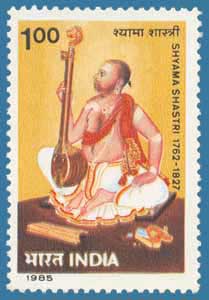
Muthuswamy Deeksithaar
Veena Kupayya-A student of Thyagaraja. He composed many krithis featuring the veena.
Culture and Competence (in manhood or otherwise) go hand-in-hand and are not antipodal. The days of the popinjay oversophisticates and the rustic barbarian must be set aside.
It is possible to be both strategically serious and sophisticated in song and the other arts. The great King Bhoja was a sishya of Sarada and Skanda alike. We need not be alienated from our roots and artistic endeavours in order to tackle the modern world.
Indeed, there is a veena for every occasion. Here are some of its many types.
Types
“Govinda Dikshitar of the Tanjavur court first constructed a veena with 24 fixed frets, 12 for each octave. This was a key factor in the development of the system of 72 melakarta ragas.” [6] He is considered the originator of the Sarasvathi Veena in its current form. Nevertheless, the Veena obviously has a far greater antiquity (and variety). There were at one point as many as 25 different kinds of veenas. Kanakaveena or brahma veena may very well be the origin of them all. In fact, Palkurki Somanatha, famed Telugu Poet of the Kakatiya era, in his poem Panditharaadhya Charitramu gives us 41 [6]:
1. VEENOTTAMAMU 2. BRAHMA VEENA 3. KAILASA VEENA 4. SARANGA VEENA
5. KOORMA VEENA 6. AAKASHA VEENA 7. PINAAKA VEENA 8. RAAVANA VEENA
9. GAURI VEENA 10. GANDHARVA VEENA 11. BANA VEENA 12. KASYAPA VEENA
13. SWAYAMBHOO VEENA 14. BHUJANGA VEENA 15. BHOJA VEENA
16. KINNARA VEENA 17. TRINARI VEENA 18. SARASWATI VEENA 19. MOLLI VEENA
20. MANORADHA VEENA 21. GANANADHA VEENA 22. KAUMARA VEENA 23. ANIVANI
24. RAVANA HASTAM 25. TIPIRI 26. SAKANEY 27. VALI 28. VICHITRAKA 29. NATA
30. SAGARIKA 31. KUMBHAKA 32. VIPANCHIKA 33. SARA VEENA 34. PARIVAADI
35. MALLARI 36. KOLAASHTI 37. SWARAMANDALAM 38. GHOSHAVATI
39. AUDUMBARAM 40. TANTRI SAAGARAM 41. AMBUJA VEENA.
Here is a listing of the ones that are prevalent in the present time.
Rudra veena-Undoubtedly the most august and masculine of all the Indian lutes, the Rudra Veena commands respect even today. Legend has it that Lord Shiva was inspired to construct it when he caught glimpse of Parvathi Devi taking rest. Struck by her beauty, the Rudra Veena was the result of the saundharya of this most Divine of muses.
Sarasvathi veena-The Sarasvathi veena is the most iconic of all the varieties. The very mention of the word Veena brings to mind this image. While the current form is traced to The Thanjavur Nayak court, it is in fact more ancient. Its measurements and structure are considered the standard.
Brahma Veena-The Veena of Lord Brahma, which helps facilitate his creation of the universe.
Vichitra Veena-Commonly used in the Hindustani style of music. A veena of seven strings (played with the fingernails). Does not have any frets.
Ghoshavathee Veena-Thought to be the predecessor to the comparatively recent Vichitra Veena.
Vipanchee-A Veena of nine strings. Has 6 karanas (roopa, pratikrita, pratibheed, roopa sesha, oogha and pratisushka). It is played with a plectrum.
Tritantri Veena-It is often said that the Sitar is merely a renamed and re-tuned Tritantri. It is called so for the 3 strings that it has.
Saradiya Veena-This instrument is now called a Sarod, and has carved its own name in the Hindustani music world.
Mohana Veena-Considered to alternately be a modification of the Sarod and guitar. As such has two variations.
Yaal (Yazh)-Commonly used in Tamizh Nadu and considered an ancestor of the Veena.
Mahathi Veena-the Veena of choice of Narada Muni.
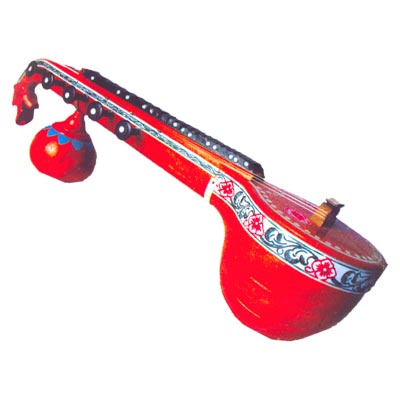 Bobbili Veena-Today seen more as a toy than an august instrument of music, the Bobbili veena has nonetheless carved out its own name in the world of crafts. In fact, it historically had a golden age under the Rajas of Bobbili, and the instrument was a serious one for musical performances in the small kingdom. It was frequently given as a gift, and as most of the pre-modern varieties, was often gilded.
Bobbili Veena-Today seen more as a toy than an august instrument of music, the Bobbili veena has nonetheless carved out its own name in the world of crafts. In fact, it historically had a golden age under the Rajas of Bobbili, and the instrument was a serious one for musical performances in the small kingdom. It was frequently given as a gift, and as most of the pre-modern varieties, was often gilded.
Characteristics
Although there are numerous variations of the veena, the structure is generally the same. Number of strings aside, the Veena typically has a head (called a kuppam), 24 frets, with 4 strings (representing Chaturveda and also Purushartha), and 3 on the side (called thaala strings). The latter are said to represent Iccha Shakti, Jnana Shakti, and Kriya Shakti. [3,4]
The 24 frets represent 12 swarasthanas in two octaves (24). Just like the 24 frets of the Veena, human back bone has 24 divisions. According to the human anatomy, the back bone has 7 cervicles (7 strings), 12 thorasic (representing the 12 swara sthanas) and 5 lumbar vertebrae (representing the 5 notes R, G, M, D,N –S and P are not included as they are prakrithi swaras or natural notes). The 24 frets get their importance by the nada produced from them. [3,4]
The best veenas are made from a single block of wood, typically jackwood. These are the instruments that stand the test of time and become veritable heirlooms in eminent families, as in the Royal Family of Mysuru. They may very depending on region and taste.
Process
The veena is most often constructed in 3 parts. Though made from a single piece of jackfruit wood (called panasa), it consists of a head, a neck, and a resonator. A stabiliser (thumba) is made from hollow pumpkin. The wood itself is lacquered after carving and construction.
The fret board is hollow, and generally includes 24 brass frets. These are set on black honey wax and wooden tracks. A soft black coal powder is used to give it colour.
The strings themselves are usually brass.
The Thanjavur variety is typically 4 feet in length. Due to lack of patronage, there are less than 100 artisans in that craft today. In Bobbili it is around 30 families. These artisans, and the pandits preserving the traditional knowedge, require patronage, once given by feudal nayaks. The established business families of this era have a responsibility to fill this void.
Legacy
Veena is the Divine Instrument. Verily, it represents the concept of Moksha through music.
From Lord Shiva and the Rudra Veena to APJ Abdul Kalam and the Sarasvathi Veena, this instrument has captured the imagination of ancient and modern India alike.
Veena is our national instrument. It is a treasure. [5]
Famous Players
https://www.youtube.com/watch?v=rG1pn84lirA
“A viiNaa player must be untiring and must be an expert in handling the citraa tupe of viiNaa. A flute player must be physically strong, steady and must have long breath” [2,115] And yet, despite these demands, Veena players (and vamsee players for that matter) have run the gamut. Some are of course established expert performers in Carnatic Classical or Hindustani. And others are perhaps better known in other areas (such as our own Yamini Purnatilaka garu), and yet, are accomplished artistes in this most divine of instruments, nonetheless.
Venkataramanadas
Emani Sankara Sastry
Chitti Babu
Sundaram Balachander
R.Venkataraghavan
Asad Ali Khan
Doraiswamy Iyengar
Brahm Sarup Singh
TN Seshagopalan
Jayanti Kumaresh
Punya Srinivas
Future
The future of the veena is at a crossroads. Rootlessness among metro youth and adults alike have reduced interest in traditional heritage as it is. The violin’s usurpation of the veena’s traditional place as primary vocal accompaniment has exacerbated matters.
While there are veena virtuosos even today, it will require collaborative efforts with an eye on modern dynamics to restore this cultural treasure to its rightful place. It will require some effort from current connoisseurs and some adjustment from traditionalists. Not only should instrumentals be promoted but even fusion efforts given due credit.
Fusion
To be fair, there have been general attempts outside of fusion to promote the veena. But these have been isolated. To restore Rudra’s vaadya to its proper place will require not only comprehensive and cooperative efforts across a state or many states, but also some tough decisions about current musical accompaniment.
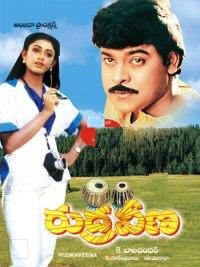
The violin is a beautiful instrument, and credit to the European classical tradition for evolving it. Yet, it is possible to appreciate the foreign while preserving our own. Perhaps the best service stalwarts of Carnatic can do today is to encourage the reintroduction of the veena as the mainstay in katcheris, and even in less formal performances. The Rudra veena and the Sarasvathi veena (in its most popular measurement) may indeed be difficult to transport (as part of a troupe) for our peregrinatious performers of the post-modern period. Nevertheless, a suitable veena should be decided upon and encouraged to take the place of violin.
Violin invariably will continue in the forseeable future, and one does not wish to discourage those talented Carnatic performers who have devoted their lives to this delightful instrument. They should continue to perform with patronage & certainly demand for “fusion” only continues to expand. But tradition is tradition. While the artistic spirit of musical experimentation should be encouraged, the integral core must be preserved.
Incipient steps must be taken to restore our National Instrument to its rightful place. Sarasvathi herself would expect nothing less for her namesake.
Saa Me Vasatu Jivhagre Veena Pusthaka Dharini-May Goddess Saraswathi, holding the Veena and the Vedas, always reside in my tongue. [3,8]
References:
- Iyer, A.S. Panchapakesa.Karnataka Sangeeta Sastra: Theory of Carnatic Music.
- Appa Rao, P.S.R & P. Sri Rama Sastry. A Monography on Bharata’s Natya Sastra. Hyderabad: Natyakala Press. 1967.P.110-112
- Mahesh, Anuradha. Shanmukhapriya School of Music. 2016 https://www.scribd.com/document/305207642/Veena-the-Divine-Instrument
- Somasekhara
- http://www.thehindu.com/chennai-margazhi-season/nirmala-rajasekars-mission-is-to-keep-the-veena-flag-flying-across-the-globe/article6735447.ece?widget-art=four-rel
- http://www.theveena.com/veena/
- http://www.forbesindia.com/article/recliner/the-last-notes-of-the-thanjavur-veena/32670/1
- http://www.jayanthikumaresh.com/about-the-veena/
- http://www.gklokam.com/2015/10/important-instrument-player-exams.html
- Divekar, Hindraj. Rudra Veena: An Ancient String Musical Instrument. New Delhi: DPH. 2001
- Dutta, Madhurima.Let’s Know Music and Musical Instruments of India. New Delhi: IBS books. 2008
- http://www.firstpost.com/living/thanjavur-veena-to-be-first-indian-instrument-to-get-made-in-thanjavur-tag-545793.html
- http://timesofindia.indiatimes.com/city/visakhapatnam/Melody-of-Bobbili-Veena-dying-out/articleshow/47451422.cms
- http://gaatha.com/bobbili-veena/
